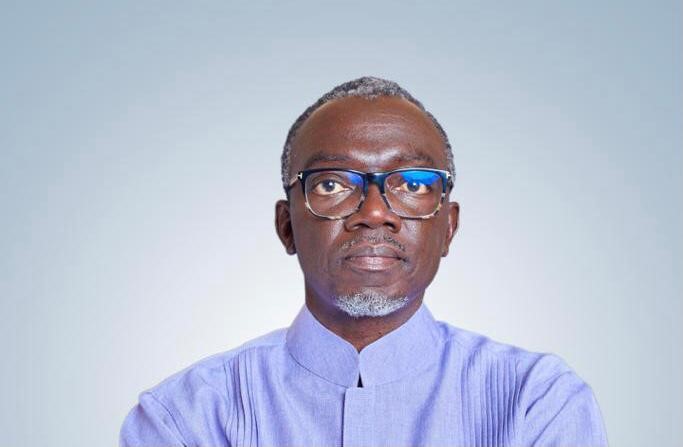The recent COVID-19 pandemic and other global crises, including climate change and conflict, have arguably resulted in the reversal of decades of development progress worldwide.
This sudden and unexpected reversal has created a crisis for the 2030 Agenda for Sustainable Development and its associated goals, putting the entire project on a precarious footing. The stability of the global economy, environment, and social equity depends on these goals being achieved, making this recent setback all the more concerning.
In the most recent Sustainable Development Goals Report (2022), Liu Zhenmin, then Under Secretary-General for Economics and Social Affairs, insisted that “COVID-19, climate change and conflict predominate. Each of them, and their complex interactions, impact all of the Goals, creating spin-off crises in food and nutrition, health, education, the environment, and peace and security”.
Using millions of data points from over 200 countries, the report, which provides an overview of the implementation progress of the UNSDGs, highlights the impact of these crises on each of the individual Sustainable Development Goals.
The United Nations Sustainable Development Goals (UNSDG) 2022 data highlights the devastating impact of the ongoing COVID-19 and the Ukraine crisis on global progress toward ending extreme poverty. This data reveals that both events have slowed the world’s efforts to eradicate extreme poverty, especially in some of the world’s most vulnerable communities.
Goal 1: No Poverty – End poverty in all its forms everywhere
In 2015, 10 percent of the world’s population lived in abject poverty. Today, people in extreme poverty are recognised as living on less than US$1.90 daily. According to the UN Secretary-General, Mr Guterres, this means “that more than 700 million people could not meet the most basic needs, including access to health, education, water and sanitation”.
Initial targets set out for the UNSDG to end poverty in 2015 included:
1.1 By 2030, eradicate extreme poverty for all people everywhere, currently measured as people living on less than US$1.25 a day
1.2 By 2030, reduce at least by half the proportion of men, women and children of all ages living in poverty in all its dimensions according to national definitions
1.3 Implement nationally appropriate social protection systems and measures for all, including floors, and by 2030 achieve substantial coverage of the poor and the vulnerable
1.4 By 2030, ensure that all men and women, in particular people with low incomes and the vulnerable, have equal rights to economic resources, as well as access to essential services, ownership and control over land and other forms of property, inheritance, natural resources, appropriate new technology and financial services, including microfinance
1.5 By 2030, build the resilience of people experiencing poverty and those in vulnerable situations and reduce their exposure and vulnerability to climate-related extreme events and other economic, social and environmental shocks and disasters
1.6 Ensure significant mobilisation of resources from a variety of sources, including through enhanced development cooperation, to provide adequate and predictable means for developing countries, in particular least developed countries, to implement programmes and policies to end poverty in all its dimensions
1.7 Create sound policy frameworks at the national, regional and international levels, based on pro-poor and gender-sensitive development strategies, to support accelerated investment in poverty eradication actions
In 2022, the number of people experiencing extreme poverty increased for the first time in a generation. It was estimated that an additional 75 to 95 million people are living in extreme poverty due to the COVID-19 pandemic.
The SDGR report further states: “Between 2015 and 2018, global poverty continued its historical decline, with the extreme poverty rate falling from 10.1 percent to 8.6 percent”. However, recent data suggest that this rate increased significantly between 2019 and 2020, from 8.3 percent to 9.2 percent. This is the first rise in extreme poverty since 1998.
In addition, the number of workers being pushed into poverty “rose for the first time in two decades,” resulting in approximately 8 million extra workers being forced into poverty in 2020.
Developing countries have been particularly impacted, with the United Nations insisting that these economies will experience more significant economic and social crises over the coming years, with millions of people being pushed into unemployment, underemployment and working poverty.
The report also highlights that “the pandemic has likely exacerbated existing disparities in working poverty rates for youth and women, who were already more likely than adults and men to be among the working poor. Youth and women were disproportionately affected by working-hour losses and pay cuts in 2020, meaning these gaps will likely widen”.
Rising inflation and the impacts of the war in Ukraine are further exacerbating the reversal of recent poverty reduction gains (SDGR, 2022). Ghana has seen significant success in reducing poverty, with a 2020 Ghana Statistical Services report noting substantial reductions over time.
A research study by the Government of Ghana found that “deprivations of Ghanaians across the domains of health, education, and living standards have been significantly reduced over the past six years – from 55 percent in 2011 to an impressive 46 percent in 2017”. This indicates a marked improvement in the quality of life for citizens, a result which is attributable to various policies implemented by the government.
The report further details the complexity of poverty in Ghana, revealing that 40 percent of Ghanaians live beyond just monetary deprivation. This estimated 14 million people are considered “multi-dimensionally poor”, which encompasses income, health, education, and access to infrastructure, among other factors. Furthermore, the report found that the poorest are primarily affected by exclusion from financial services and lack of access to primary forms of employment.
When looking at the issue of extreme poverty in Ghana, recent data collected by Statista shows that the percentage of people living on less than US$1.90 a day has decreased from 12.3 percent in 2017 to an estimated 11.3 percent by 2022. This is promising news for the nation as it suggests that progress is being made toward reducing poverty and creating more equitable conditions for its citizens.
According to Statista, the population of Ghana in 2023 was estimated to have around 2.99 million people living in extreme poverty, with the vast majority of these residing in rural areas. This equates to approximately 2.8 million people living on less than US$1.90 daily in rural regions, while an estimated 214,000 individuals live in urban areas with limited incomes and resources. Poverty levels have been steadily increasing over the past few years. They are one of the significant issues that need to be tackled by government intervention and aid programmes if any real progress is to be made.
Despite significant improvements in some areas, these figures illustrate that Ghana and much of the African continent are still struggling to meet their targets in ending extreme poverty. Policy-makers and other officials must be mindful of the effect that the COVID-19 pandemic fall-out and other global crises have had and will continue to have on perpetuating extreme poverty in Ghana, as well as across the continent.
In conclusion, for a drastic change in the current trend, there must be substantial economic growth across all UN-affiliated developing countries to make strides toward reducing poverty and inequalities within their respective populations. The only way this can be achieved is through a collective effort of the international community, combined with targeted initiatives and adequate resources allocated to these efforts.
>>>The writer is an international chartered director and Africa’s first-ever appointed Professor Extraordinaire for Industrialisation and Supply Chain Governance. He is the CEO of PanAvest International and the founding non-executive chairman of MY-future YOUR-Future and OUR-Future (“MYO”) and the “thought-provoking” daily Nyansa Kasa (words of wisdom) series. Professor Boateng is currently the non-executive chairman of the Minerals Income and Investment Fund (MIIF). He was previously the non-executive chairman of the Public Procurement Authority (PPA). For more information on Nyansakasa, visit www.myoglobal.org and www.panavest.com










